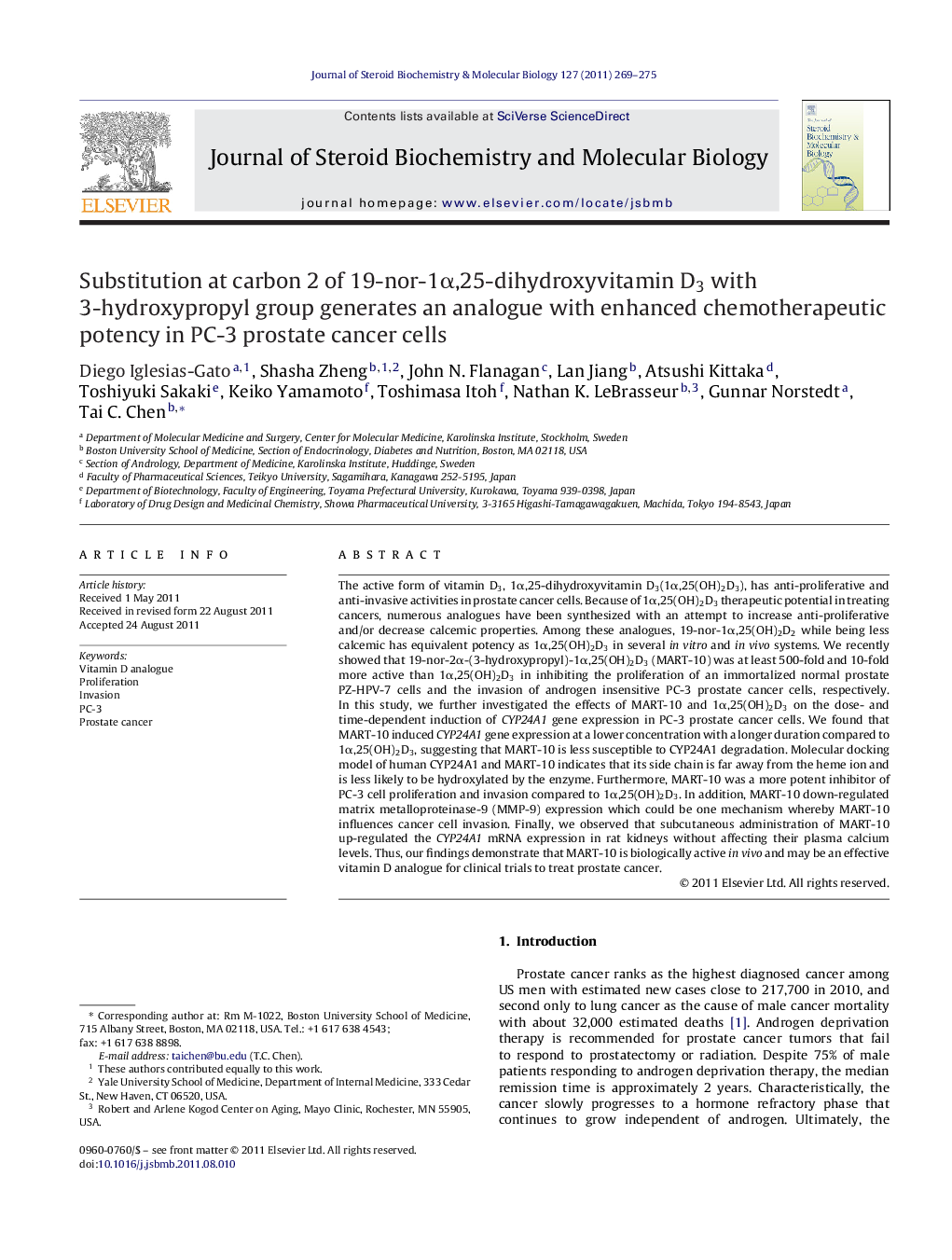| Article ID | Journal | Published Year | Pages | File Type |
|---|---|---|---|---|
| 1991824 | The Journal of Steroid Biochemistry and Molecular Biology | 2011 | 7 Pages |
The active form of vitamin D3, 1α,25-dihydroxyvitamin D3(1α,25(OH)2D3), has anti-proliferative and anti-invasive activities in prostate cancer cells. Because of 1α,25(OH)2D3 therapeutic potential in treating cancers, numerous analogues have been synthesized with an attempt to increase anti-proliferative and/or decrease calcemic properties. Among these analogues, 19-nor-1α,25(OH)2D2 while being less calcemic has equivalent potency as 1α,25(OH)2D3 in several in vitro and in vivo systems. We recently showed that 19-nor-2α-(3-hydroxypropyl)-1α,25(OH)2D3 (MART-10) was at least 500-fold and 10-fold more active than 1α,25(OH)2D3 in inhibiting the proliferation of an immortalized normal prostate PZ-HPV-7 cells and the invasion of androgen insensitive PC-3 prostate cancer cells, respectively. In this study, we further investigated the effects of MART-10 and 1α,25(OH)2D3 on the dose- and time-dependent induction of CYP24A1 gene expression in PC-3 prostate cancer cells. We found that MART-10 induced CYP24A1 gene expression at a lower concentration with a longer duration compared to 1α,25(OH)2D3, suggesting that MART-10 is less susceptible to CYP24A1 degradation. Molecular docking model of human CYP24A1 and MART-10 indicates that its side chain is far away from the heme ion and is less likely to be hydroxylated by the enzyme. Furthermore, MART-10 was a more potent inhibitor of PC-3 cell proliferation and invasion compared to 1α,25(OH)2D3. In addition, MART-10 down-regulated matrix metalloproteinase-9 (MMP-9) expression which could be one mechanism whereby MART-10 influences cancer cell invasion. Finally, we observed that subcutaneous administration of MART-10 up-regulated the CYP24A1 mRNA expression in rat kidneys without affecting their plasma calcium levels. Thus, our findings demonstrate that MART-10 is biologically active in vivo and may be an effective vitamin D analogue for clinical trials to treat prostate cancer.
► Therapeutic potential of MART-10, a vitamin D analogue, in treating prostate cancer. ► MART-10 induced 24-OHase expression at a lower concentration with a longer duration. ► Its side chain is far away from the heme ion, less likely to be hydroxylated. ► MART-10 was a more potent inhibitor of PC-3 cell proliferation and invasion. ► MART-10 down-regulated MMP-9 expression to influences cancer cell invasion.
